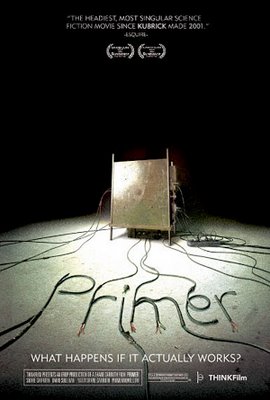I don’t think I had the right idea about Michael Jackson’s This Is It.
I thought it would be a performance blended with documentary – much like Madonna’s fantastic I’m Going To Tell You A Secret. Really it was neither – none of the songs in the film quite made it to being fully realized production numbers, and aside from brief thoughts from the dancers and band there was precious little behind-the-scenes or direct-to-camera interaction.
I still loved it.
It’s not an easy thing to articulate why. Michael is front and center throughout, leading his entourage through the all-hits set of his impending stadium concert. However, he isn’t in full performance mode. He is dressed down (which is still pretty impressive), frequently just “marking” his vocals (gently singing the top or end of each phrase), and working through his choreography (always amazing; in several instances we’re shown the day-to-day differences in split screen).
All of those were reasons I loved it. As you watch, you realize that any behind-the-scenes iteration of documenting Michael’s “real life” would be no more real than one of his music videos. Michael was real when he was engaged in his creative process, and here we get an unprecedented, unadulterated view of that.
The most breathtaking moments of the film are times when a performance begins or ends with no warning – as when Michael working the background vocals of “Human Nature” gives way to a glorious acappella verse of the song, or when he directs his tiny blonde guitarist Orianthi to shred harder and higher on “Beat It.” The line between personal Michael and performance Michael is eroded.
The film is documented by a jarring array of cameras, some high def with perfect angles on the stage, some grainy and far-away – like watching the show on YouTube. For the first few songs I caught myself wondering, They put out a movie of this?. But as This Is It continues I appreciated that it tells the story any way it can.
Since songs were synced to specific tempo tracks (likely from samples or in-ear for the drummer), the filmmakers could piece together the most compelling vocal take across the fiercest band performance, and combine it with video from multiple run-throughs – differentiated by the variety of Michael’s costuming (notably a blinged out Popeye t-shirt, a silver suit jacket with bright red pants, and a peaked-shoulder tuxedo coat that makes him look like Jack from Nightmare Before Christmas).
Unexpectedly, the film finds its greatest success when it incorporates the stunningly crisp background videos shot for the concert. They lend depth and context to the piecemeal performances. A silly take on Thriller falls flat mid-film, but the typically mediocre “Earth Song” is powerful and moving when combined with horrific images of a burnt-out planet.
The best production in the film is undoubtedly “The Way You Make Me Feel,” beginning with Michael adjusting the keyboards by singing the part note-for-note to his band, and giving way to a stunning digital backdrop of the dance-troupe lazing across a multi-story scaffold, silhouetted by the rising sun. Michael delivers one of his most un-marked performances, and you are transported.
Yes, there are familiar eccentricities on display. Jackson is flummoxed when his in-ear monitors are too loud on his first run through a Jackson 5 medley, seemingly nearing a breakdown before the director explains that the volume can simply be turned down. He gives music direction in a peculiar blend of vocal percussion and descriptions of texture, which often seem to leave the vocal director and band-leader puzzled, promising they’ll figure it out later.
All the big hits are covered, with few exceptions – no “Don’t Stop ‘Til You Get Enough” (or anything else from Off the Wall), no “Will You Be There” or “Remember the Time,” and a curious lack of verses on his theme-song “Man in the Mirror.” Otherwise, it’s everything you would expect – the only surprise is the Jackson 5 medley ending on the relatively obscure (for younger fans, anyway) “Shake Your Body Down to the Ground.”
Perhaps the most genuine moment in the film comes when Michael goes all out on the end of “I Just Can’t Stop Loving You” with phenom backing vocalist Judith Hill, whose voice is so eerily similar to MJ’s that she is surely doubling him on many of his songs. As she perfectly riffs through the song’s coda the performer in Michael can’t help but follow, egged on by a rapt cadre of dancers in the audience. After finishing out the intense duet, Michael gently admonishes, “You can’t do that to me. I have to save my throat. [To Judith] You’re fine, you’re wonderful. I have to save my throat.”
He smiles, and maybe finishes with “God bless you,” the punctuation on every piece of direction he provides. Every time you hear it you know he means it. This Is It shows Michael Jackson at home the only place he lived his entire life – on stage – and it makes evident not only his prodigious talents but also his depthless gratitude for the people who made it possible – both his crew and his fans alike.

 I read the book. It only makes sense if you have the movie committed to memory. And if you do, it is mind-altering. Game-changing. It completely re-writes the movie, making significant some details that seemed routine and expository. It increases the perceived depth of Shane’s careful plotting exponentially.
I read the book. It only makes sense if you have the movie committed to memory. And if you do, it is mind-altering. Game-changing. It completely re-writes the movie, making significant some details that seemed routine and expository. It increases the perceived depth of Shane’s careful plotting exponentially.